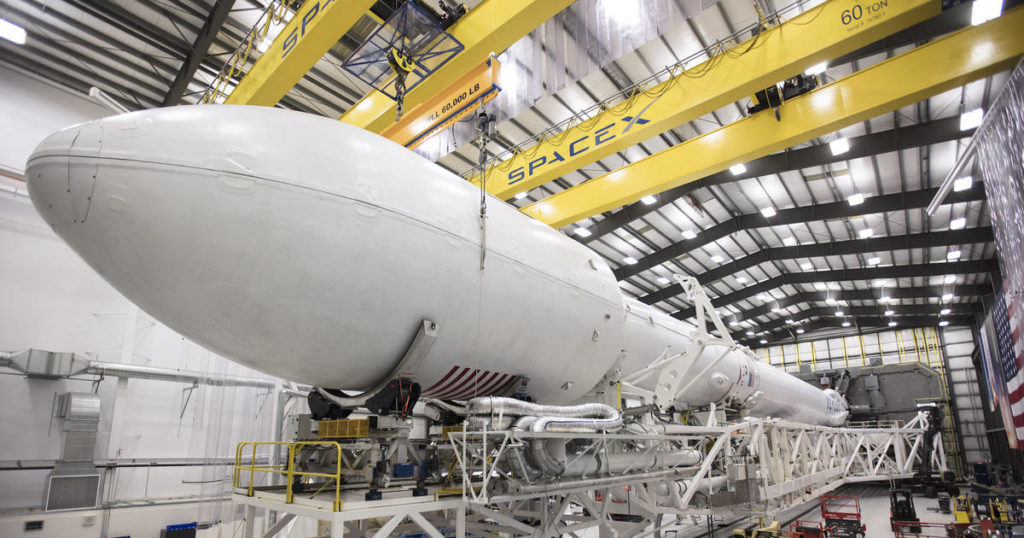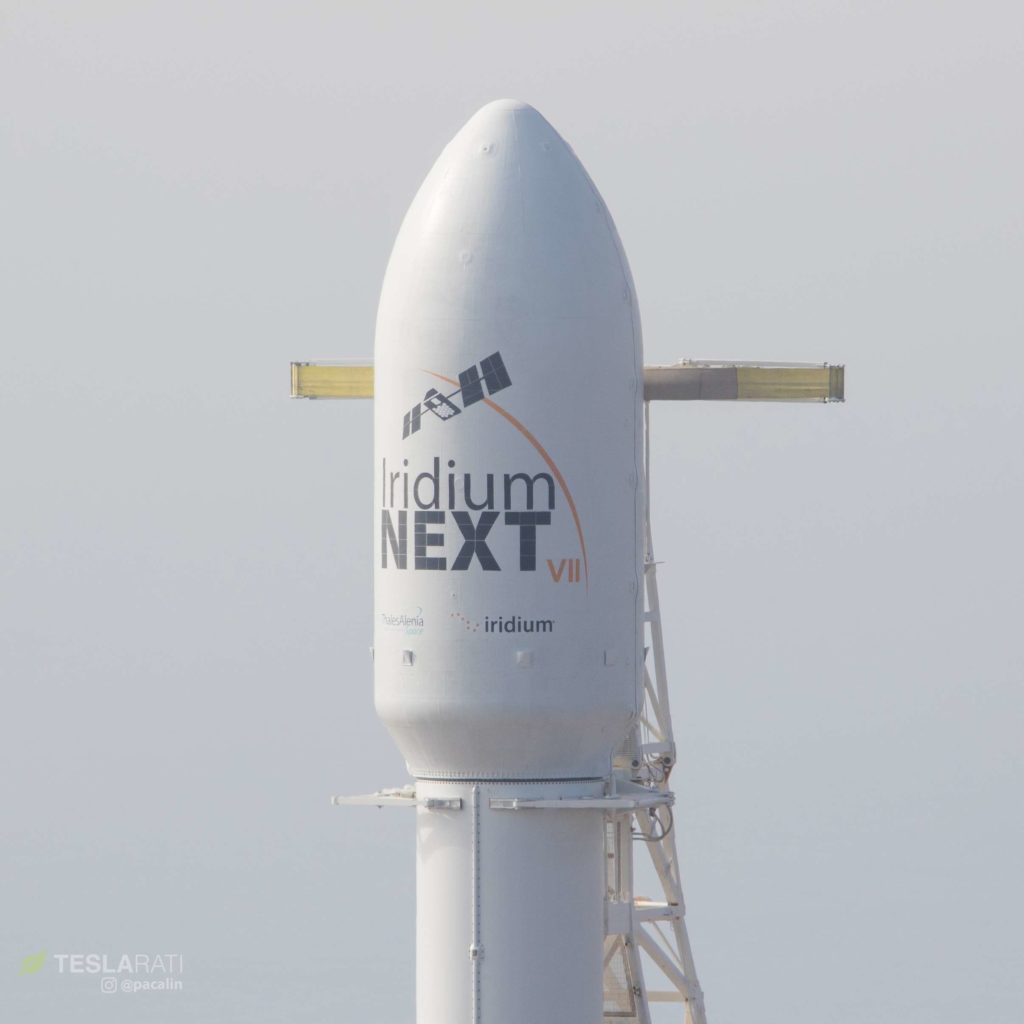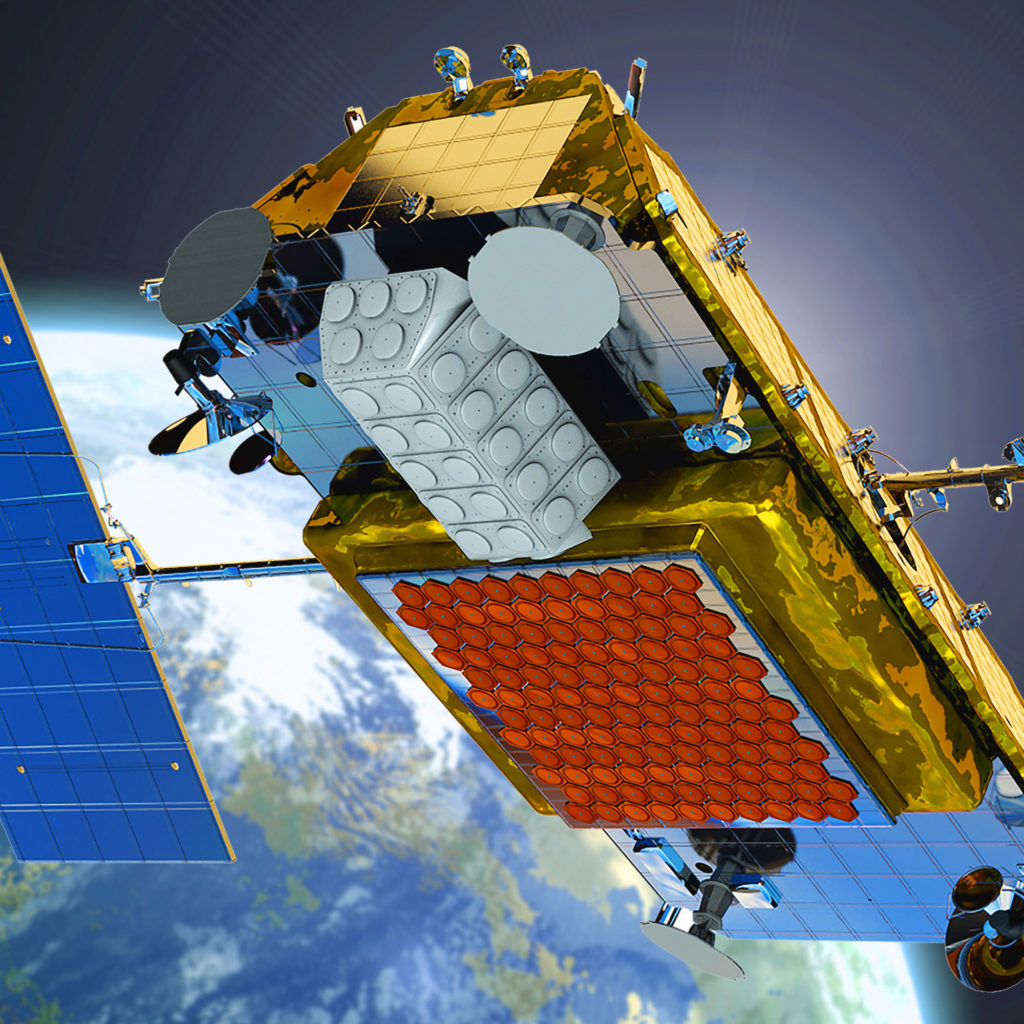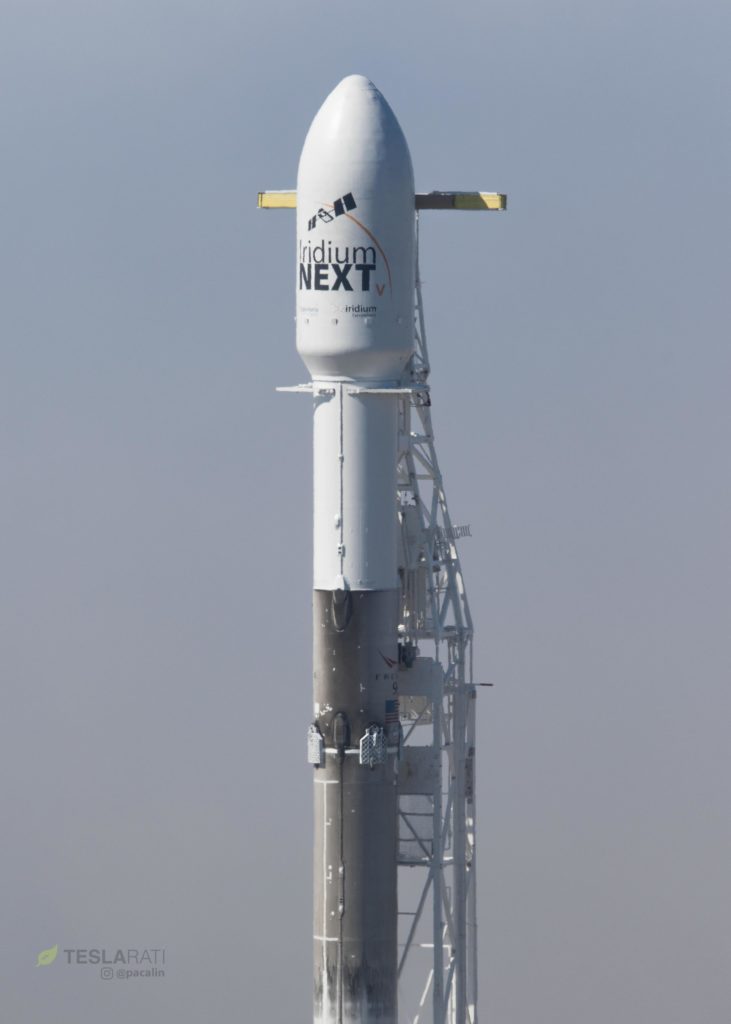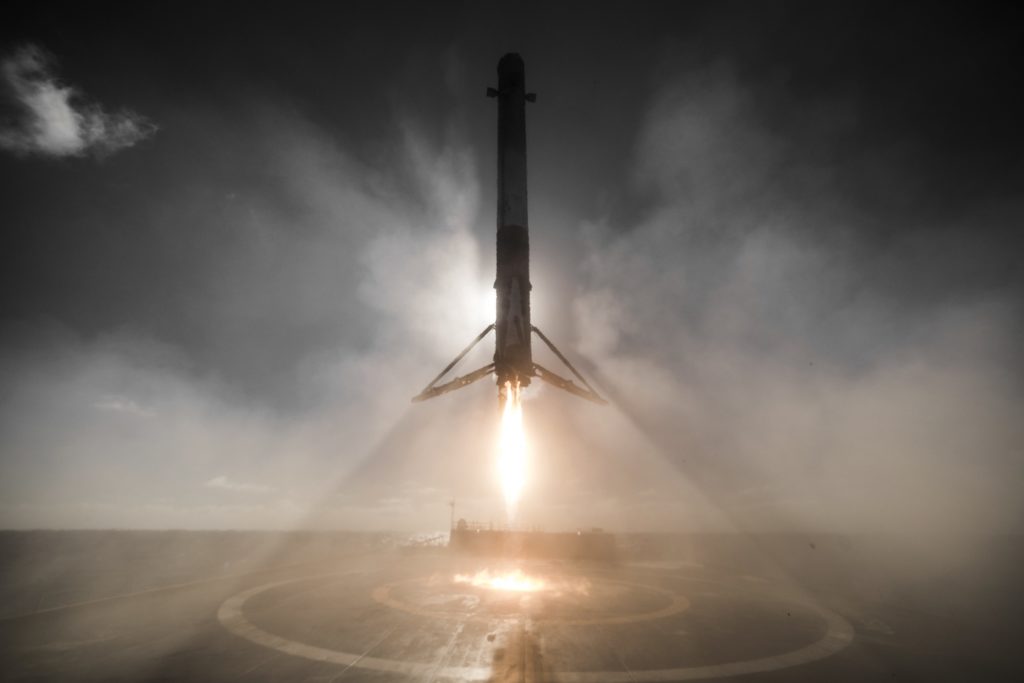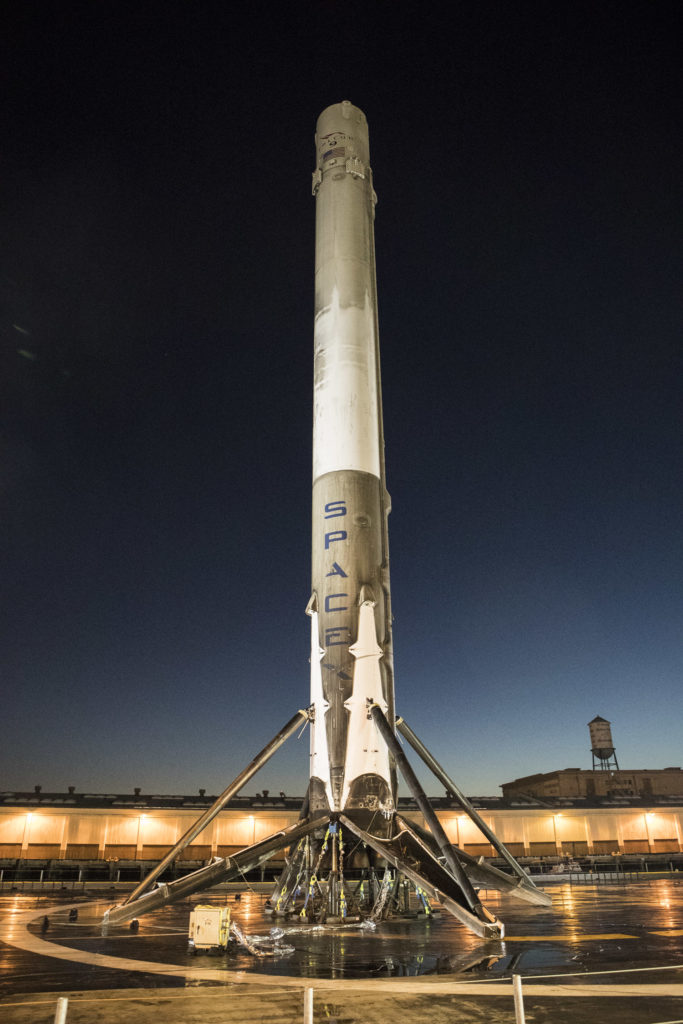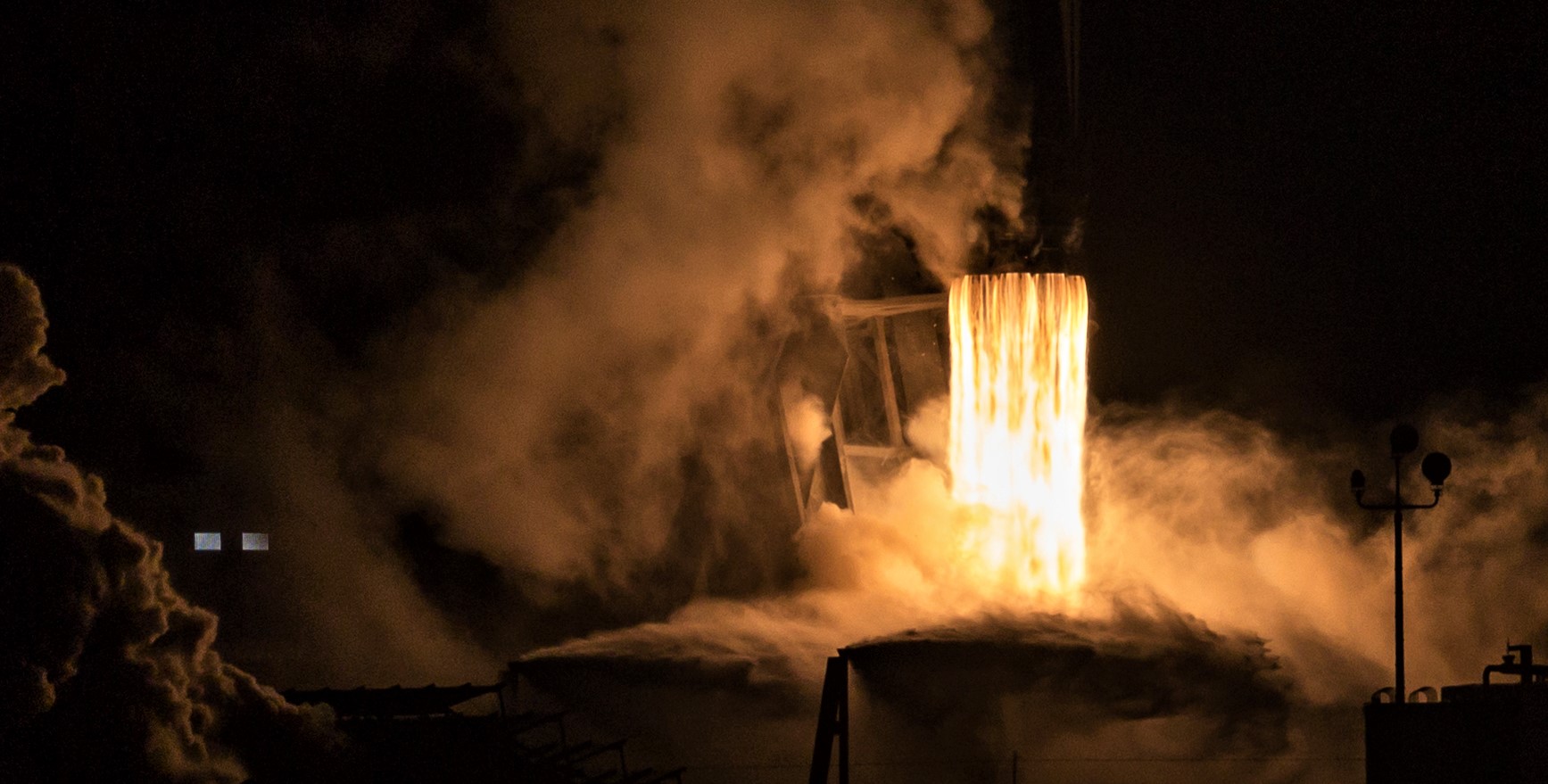
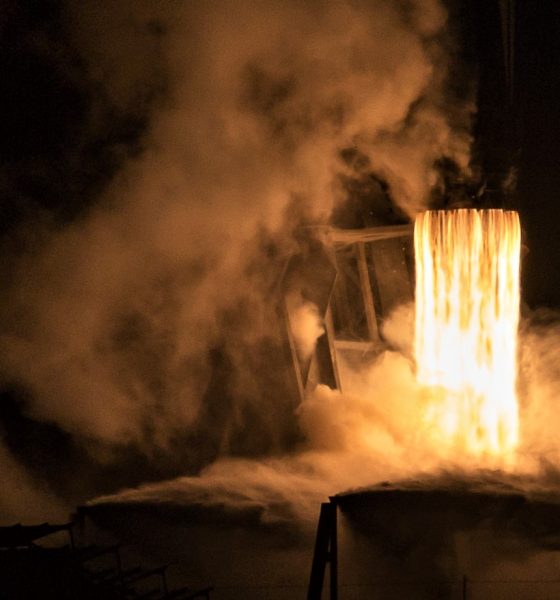
News
SpaceX tracks towards first launch of 2019 with flight-proven Falcon 9 static fire
SpaceX has completed a Falcon 9 static fire test ahead of the company’s first launch of 2019, kicking off what is looking to be a truly jam-packed year for Falcon 9 and BFR. Most important, of course, is SpaceX’s primary business and main sources of revenue – safely and reliably launching customer satellites, payloads, and – soon – astronauts into orbit.
Previously tasked with launching heavy communications satellite Telstar 18V in September 2018, Falcon 9 B1049 is now set to launch an arguably historic mission for both SpaceX and customer Iridium, the eighth and final contracted launch of the upgraded Iridium NEXT satellite communications constellation.
Static fire test of Falcon 9 complete. Working with customer to determine best launch opportunity to complete the Iridium NEXT constellation; will announce targeted launch date once confirmed.
— SpaceX (@SpaceX) January 6, 2019
Struck all the way back in June 2010, Iridium’s decision to award the full NEXT constellation launch contract to SpaceX less than two weeks after Falcon 9’s first and only launch may well be the greatest calculated leap of faith in the history of commercial spaceflight. SpaceX did admittedly offer an unbeatable price ($492M for eight launches, $61.5M per launch) that may have allowed Iridium to afford a new constellation in the first place, but the risk Iridium took was truly immense at the time.
Originally launched between 1997 and 1998, the first Iridium constellation became and still remains the only satellite communications constellation in history to offer global and persistent coverage anywhere on Earth, allowing those with Iridium devices to guarantee connectivity no matter where they are. To some extent, the original constellation has become a subtle but omnipresent backbone of a huge variety of ventures, companies, and services, ranging from marine vessel tracking and emergency response to the go-to solution for those heading far off the beaten path. As just one small example, SpaceX’s large fleet of sea-going vessels and its cross-country transport infrastructure both rely on Iridium for streamlined company-wide movement tracking, making life considerably easier for logistics and planning teams.
@SpaceX #falcon9 vertical at SLC-4. Iridium NEXT-8 slated for 01/08 from #VandenbergAFB. #spacex #iridium pic.twitter.com/uJBIgG5Lrp
— Brian Sandoval (@sandovalphotos) January 6, 2019
Iridium’s decision to use SpaceX for its NEXT constellation likely also gave SpaceX a massive stature boost, taking it from the company with just a handful of commercial contracts that had failed three of its last five launches to the company that secured what was at the time the largest single commercial launch contract in history. Alongside NASA’s Commercial Orbital Transport Services (COTS) and Resupply Services (CRS) commitments (~14 launches as of 2010), Iridium NEXT raised SpaceX’s commercial manifest from perhaps 2 missions to ~10 while also taking the value of those contracts from an almost negligible sum to well over half a billion dollars.
Although SpaceX and Iridium originally planned for launches to take place over a roughly 24-month period stretch from 2015 to 2017, unplanned technical delays and a duo of catastrophic Falcon 9 failures (CRS-7 and Amos-6) in 2015 and 2016 ultimately pushed Iridium NEXT’s launch debut back several years. Despite those immense hurdles and a range of smaller issues, SpaceX and Iridium were finally able to begin launching satellites in January 2017 and have continued to consistently do so every 3-4 months since then. Aside from one partial NASA rideshare mission that featured five NEXT satellites in May 2018, all seven launches have placed ten NEXT satellites (weighing approx. 10,000 kg or 22,000 lb total) in a variety of low polar orbits without a single known hitch.
- A rare glimpse inside SpaceX’s SLC-4 rocket integration hangar, January 2017. (SpaceX)
- Iridium-7’s Falcon 9 payload fairing, July 2018. (Pauline Acalin)
- LEO communications satellites like Iridium’s NEXT constellation feature totally flat panels of phased array antennas, capable of forming beams digitally. (Harris)
Falcon 9 enters the era of reusability
Closely following SES, NASA, and SSL (BulgariaSat), Iridium also became the fourth commercial entity to launch on a flight-proven Falcon 9 rocket for the launch vehicle’s fourth flight-proven mission ever. Iridium-8 will become the fourth constellation launch to fly aboard a sooty Falcon 9 rocket, meaning that a full 50% of the next-gen satellites will have launched on reused rockets, easily one of the coolest bragging rights ever. Currently standing at 65 NEXT satellites in orbit and rapidly nearing operational status, Falcon 9 B1049 and a fresh upper stage will (fingers crossed) place the last ten satellites in orbit to complete the constellation’s last plane and seal the last gap in its perfect global coverage.
Although NEXT would have been valuable for the sole reason that its predecessor satellites are now 5-10 years past their designed lifespans, NEXT will also serve to dramatically increase Iridium’s overall bandwidth, slash concurrent user bottlenecks, and provide a platform for new services like Aireon, which hopes to become the first operator of a truly commercial aircraft tracking service with global satellite-based coverage.
- Falcon 9 B1041.2 seen before launching Iridium-5. (Pauline Acalin)
- Iridium-1’s successful and scenic landing on Pacific drone ship JRTI, January 2017. This could be an increasingly rare occurrence in the Pacific, thanks to SpaceX’s new land-based landing zone. (SpaceX)
- 2017 saw SpaceX recovery 10 Falcon 9 first stages, 5 by sea. (SpaceX)
All things considered, it will be hugely bittersweet to watch Iridium and SpaceX’s direct relationship come to a close with the launch of Iridium-8. Aside from nine additional on-orbit spares once all 75 are launched, Iridium will also have a complement of six more spares that will be kept in storage on the ground until they are required in orbit. If or when those times come, SpaceX will be able to compete with other launch providers for the opportunity to carry maybe one or two Iridium satellites – likely as rideshare payloads – into orbit sometime in the future.
Iridium open to rideshares for spare satellite launches https://t.co/ino39oWCHw pic.twitter.com/56PTcaEMW3
— SpaceNews (@SpaceNews_Inc) January 4, 2019
In the meantime, stay tuned for Iridium-8’s official launch time and date, likely to be announced by SpaceX sometime within the next 24-48 hours.
For prompt updates, on-the-ground perspectives, and unique glimpses of SpaceX’s rocket recovery fleet check out our brand new LaunchPad and LandingZone newsletters!

Elon Musk
Elon Musk just said some crazy stuff about the Tesla Roadster

Elon Musk appeared on the Moonshots podcast with Peter Diamandis today to discuss AGI, U.S. vs. China, Tesla, and some other interesting topics, but there was some discussion about the upcoming unveiling of the Roadster, the company’s electric supercar that will arrive several years after it was initially slated for release.
Musk made some pretty amazing claims about the Roadster; we already know it is supposed to be lightning-fast and could even hover, if Tesla gets everything to happen the way it wants to. However, the car has some pretty crazy capabilities, some of which have not even been revealed.
On the podcast, Musk said:
“This is not a…safety is not the main goal. If you buy a Ferrari, safety is not the number one goal. I say, if safety is your number one goal, do not buy the Roadster…We’ll aspire not to kill anyone in this car. It’ll be the best of the last of the human-driven cars. The best of the last.”
🚨 Elon on the Roadster unveiling, scheduled for April 1:
— TESLARATI (@Teslarati) January 6, 2026
Musk makes a good point: people who buy expensive sports cars with ridiculous top speeds and acceleration rates do not buy them to be safe. They hope they are safe in case of an emergency or crash, but safety is not at the forefront of their thoughts, because nobody buys a car thinking they’ll crash it.
The Roadster is truly going to push the limits and capabilities of passenger vehicles; there’s no doubt about that. Tesla plans to show off the new version car for the first time on April 1, and Musk has only hinted at what is possible with it.
Musk said back in November:
“Whether it’s good or bad, it will be unforgettable. My friend Peter Thiel once reflected that the future was supposed to have flying cars, but we don’t have flying cars. I think if Peter wants a flying car, he should be able to buy one…I think it has a shot at being the most memorable product unveiling ever. [It will be unveiled] hopefully before the end of the year. You know, we need to make sure that it works. This is some crazy technology in this car. Let’s just put it this way: if you took all the James Bond cars and combined them, it’s crazier than that.”
Production is set to begin between 12 and 18 months after the unveiling, which would put the car out sometime in 2027. Hopefully, Tesla is able to stay on track with the scheduling of the Roadster; many people have been waiting a long time for it.
News
Tesla launches hiring for Robotaxi program in its twentieth country
Overall, the hiring signals Tesla’s aggressive timeline for global dominance in autonomous mobility.

Tesla has launched a hiring initiative for its Robotaxi program in its twentieth country, as the company posted two new jobs in Thailand this week.
Tesla is hiring in Bangkok and Kowloon for the Vehicle Operator position, which is related to data collection, and is the first in Thailand, but the twentieth country overall, as the company tries to expand into other markets.
🚨 BREAKING: Tesla is hiring additional full-time Vehicle Operators in Bangkok, Thailand.
Previous openings were 6-month, part-time roles. These are equivalent to AI Safety Operator roles in the U.S. pic.twitter.com/R6LzoU1bos— Tesla Yoda (@teslayoda) January 5, 2026
Tesla has had active job postings for Vehicle Operator positions in the United States, India, Israel, Taiwan, Germany, the Czech Republic, Hungary, the UK, Finland, Switzerland, Sweden, the Netherlands, Austria, Spain, Norway, Italy, and Turkey in past listings.
These postings are not all currently available, likely because the roles have been filled.
Thailand is the most recent, and broadens the company’s potential path to expanding its ride-hailing program, which is only active in the United States in Austin, Texas, and the California Bay Area, so far.
These roles typically involve data collection, which assists in improving Autopilot and Full Self-Driving operation. Tesla’s self-driving programs utilize real-world data that is accumulated and stored, observing vehicle and traffic behavior, as well as tendencies that are performed by human drivers to help increase safety and overall performance.
Overall, the hiring signals Tesla’s aggressive timeline for global dominance in autonomous mobility. Although the company has several high-profile rivals and competitors in the field, it has established itself as a main player and a leader in the development of autonomous technology, especially in the U.S., as its FSD suite is refined on almost a weekly basis.
The Full Self-Driving suite is available in seven countries and territories currently, including the U.S., Canada, China, Mexico, Puerto Rico, Australia, and New Zealand. Its biggest goal for expansion is currently the European market, where regulatory hurdles have been the main bottleneck prolonging its launch on the continent.
Tesla has performed months of testing in various European countries, including France and Spain, and does have support in some areas from various regulatory agencies. However, the company is hoping to get through this red tape and offer its suite in Europe for the first time, hopefully this year.
News
Tesla China rolls out Model Y upgrades, launches low-interest financing
These strategies are aimed at improving the ownership experience and keeping vehicle pricing competitive in the world’s largest electric vehicle market.

Tesla has rolled out minor updates to the five-seat Model Y in China, upgrading the vehicle’s center display to a higher-resolution 16-inch 2K screen. The electric vehicle maker also introduced attractive financing options, including 7-year low-interest rates, to offset the new purchase tax on EVs.
These strategies are aimed at improving the ownership experience and keeping vehicle pricing competitive in the world’s largest electric vehicle market.
Five-seat Model Y gets larger, better display
With its recent update, all three variants of the five-seat Model Y now feature an upgraded 16-inch 2K resolution center display, which replaces the vehicle’s previous 15.4-inch 1080p panel. This screen was already used in the six-seat Model Y L, and it offered improved visual clarity. Tesla China has also updated the Model Y’s headliner to black, giving the vehicle a sleeker appearance.
Prices of the five-seat Model Y remain unchanged at RMB 263,500, RMB 288,500, and RMB 313,500 for the respective trims. This update enhances the cabin experience as domestic rivals are already adopting high-resolution screens. As noted in a CNEV Post report, some domestic automakers have begun rolling out vehicles equipped with 3K-resolution displays.
New financing offers
Tesla also launched ultra-long-term financing offers for its locally produced models in China, which include the Model 3 sedan, the five-seat Model Y, and the six-seat Model Y L, through January 31, 2026. The 7-year option features an annualized fee rate as low as 0.5%, which is equivalent to 0.98% interest. This is expected to save customers up to RMB 33,479 ($4,790) compared to standard rates.
A 5-year zero-interest plan is also available, and it has been extended to the Tesla Model Y L for the first time. These incentives help offset China’s new 5% purchase tax on New Energy Vehicles (NEVs) in 2026-2027. Some of Tesla’s rivals in China have announced in recent months that they would be covering the purchase tax owed by buyers early this year.
